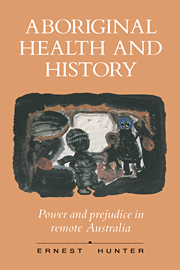Summary
INTRODUCTION
Access to alcohol has long preoccupied those claiming responsibility for the ‘welfare’ of Aborigines; until the 1960s and 1970s, legal restrictions on sales remained in force. The Licensed Publicans Act (NSW) of 1838 was the first legislation to forbid the supply of alcohol to Aborigines, with all mainland colonies subsequently following suit (McCorquodale 1985). Prohibition legislation was repealed in Victoria in 1957; New South Wales, 1963; Queensland, 1971; South Australia, 1971; Western Australia, 1972; with Aborigines in the Territories being granted drinking rights in 1964.
The subject of Aborigines and alcohol is embedded in the history of intercultural relations. In this context alcohol is not only a substance but a symbol; its prohibition had, and has, meaning. In remote Australia access to alcohol was the most immediate and tangible expression of ‘full rights’ and for many Aborigines these two things were seen as synonymous (Sansom 1980). Alcohol-affected Aboriginal behaviour, which challenges and confronts Euro-Australian standards and norms, clearly retains this meaning for certain groups (Sackett 1988). Prohibition ensured that alcohol would be a central issue in Aboriginal-police relations, a situation which has continued despite the repeal of restrictive legislation. Aborigines remain the most frequently arrested and incarcerated group in Australia; in August 1988 they were being detained nationally at a rate some twenty times that of non-Aborigines. Almost one-third of these were due to drunkenness, some three times the proportion for such arrests for non-Aborigines (McDonald 1990).
- Type
- Chapter
- Information
- Aboriginal Health and HistoryPower and Prejudice in Remote Australia, pp. 90 - 132Publisher: Cambridge University PressPrint publication year: 1993
- 1
- Cited by



